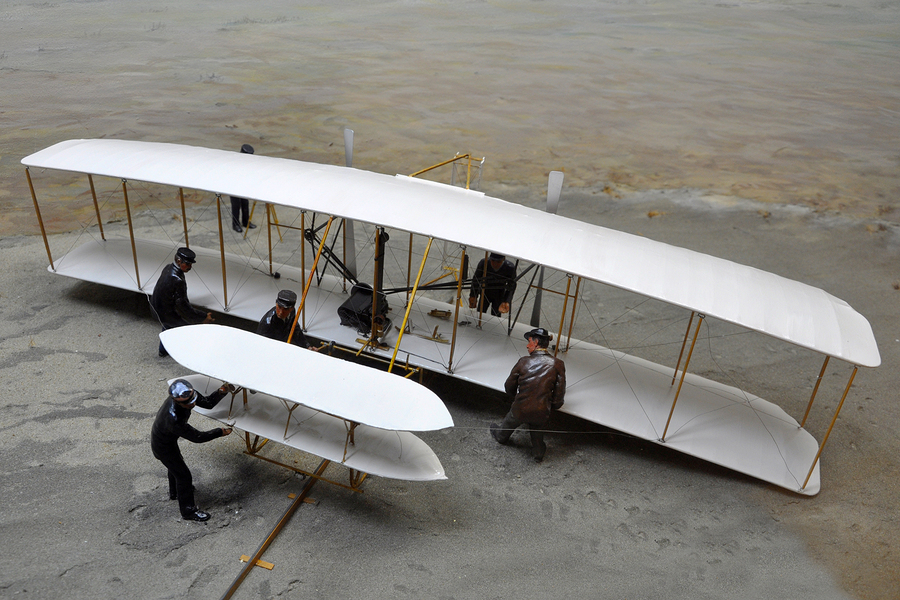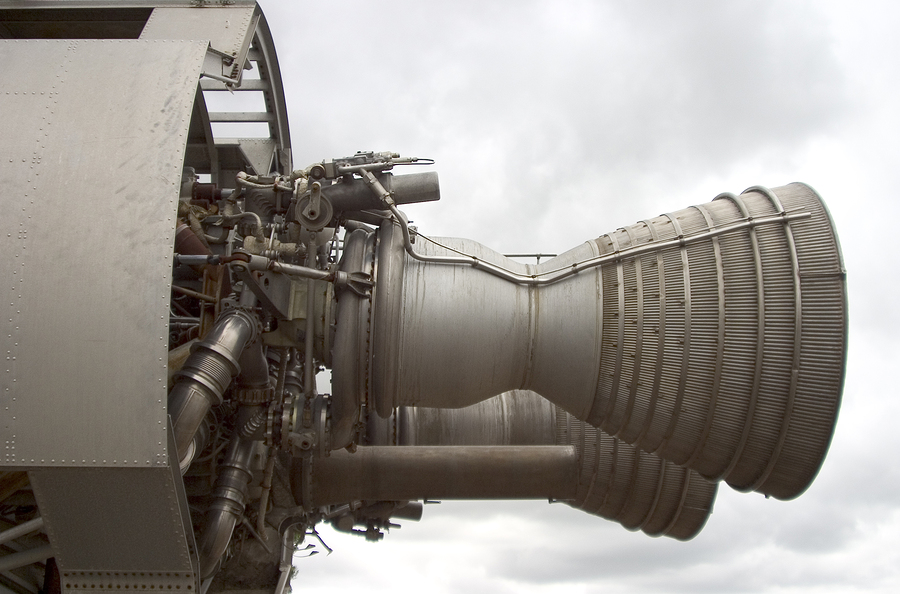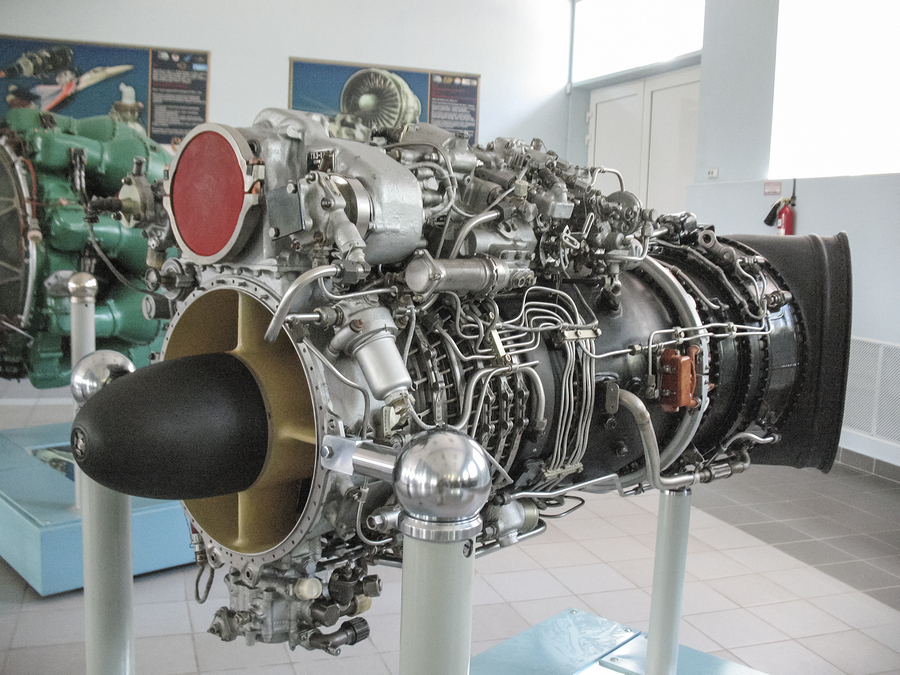Aircraft Manufacturing — A Nation’s Imagination Soars

Humans have documented their interest in flight since the ancient Greeks told the myth of Daedalus, who fashioned wings from wax and feathers so he and his son, Icarus, could fly away from the Labyrinth. Unfortunately, the story didn’t end very well for Icarus, but it does illustrate how long-held a dream flight has been for humanity.
Early aircraft

Model of First Airplane in Wright Brothers National Memorial in Kill Devil Hills, North Carolina
Successful modern aviation had to wait until the early 1900s, relying on Industrial Revolution inventions to allow a heavier-than-air craft to take flight. Standing on the shoulders of Daedalus’ observation of wing mechanics in birds, the Wright Brothers combined that knowledge with their extensive research and engineering to create the first aircraft. They used warping technology to mimic bird wing motion. The pilot controlled the warping function, finally providing early aircraft attitude control and turning capabilities. The Wright Brothers created the first factory specifically designed for aircraft manufacturing in 1910, churning out two planes each month.
World wars necessitate manufacturing
While flying machines enjoyed some success among hobbyists, the technology didn’t undergo major changes until the advent of World War I. Designed with diverse materials and ever more powerful engines, aircraft played a pivotal role, not only in engaging in combat, but in transporting troops and supplies. In order to meet this demand, U.S. automobile factories quickly became aircraft factories, complete with Henry-Ford-esque assembly lines.
One new technology to emerge from the Army Air Force’s (AAF) experience in World War II was the introduction of jet propulsion to flight. Jet propulsion allowed for a higher power-to-weight ratio, making it possible to build larger aircraft. Machine shops blossomed under the focus on larger aircraft which required greater quantities of sheet metal and more skilled workers to fashion the metal appropriately.
 A second technology arrived in the form of a captured shipment of partially-completed German missiles and the U.S. acquisition of the German scientists and engineers who developed the missiles. High-altitude, cosmic radiation, and ionosphere instrumentation resulted from this forced partnership. American engineers improved upon these developments by creating the second-stage rocket launch. Factories and laboratories combined to create these innovations, strengthening the link between education and manufacturing.
A second technology arrived in the form of a captured shipment of partially-completed German missiles and the U.S. acquisition of the German scientists and engineers who developed the missiles. High-altitude, cosmic radiation, and ionosphere instrumentation resulted from this forced partnership. American engineers improved upon these developments by creating the second-stage rocket launch. Factories and laboratories combined to create these innovations, strengthening the link between education and manufacturing.
Aircraft manufacturing future
The future of the aerospace industry appears as fantastic to us today as Daedalus’ wax and feather wings did to the ancient Greeks. Automated fiber placement (AFP) technology — an advancement of additive manufacturing that provides the strength and precision required of the aerospace industry — allows manufacturers to create ever-smaller yet more accurate aircraft parts. And 3D printing allows us to use non-traditional materials to quickly print durable parts for everything from human hands to spacecraft.

Robotic advances make these technologies possible, heralding in a new age of manufacturing work in which machines take over the dirtiest and most dangerous jobs. Humans program, monitor, and maintain the machines as computer numerically controlled (CNC) operators or programmers.
As new technologies enter plants, manufacturers will continue to adapt their craft to whatever needs arise.